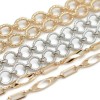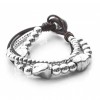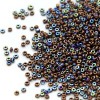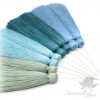The market for jewelry materials is now filled with a huge variety of goods. Take at least pearls . Natural, cotton, glass, plastic, organic... How do you know what you need? What to choose?
Therefore, I decided to do a lab work and conduct a full comparative analysis of the 2 most sought-after types of pearls. Demanded deservedly, since each of them has its own advantages and unique qualities.
Let's start...?
But first, some theory.

What is Cotton Pearl ?
Here, of course, the Japanese excelled. Again, their diligence and perseverance worked, and this type of pearl with amazing qualities was born, which, I must say, was the purpose of its creation. And the goal was to create large, but light beads for massive jewelry and for interior decor elements. It would seem that the idea lay on the surface, but it took a lot of time and a lot of experiments to solve the technical issues. But the Japanese are the Japanese - they go to the end. Recall, for example, Mikimoto, who also did not give up and nevertheless deduced the formula for creating the most stunning natural cultured pearls in the world (but more on that another time).
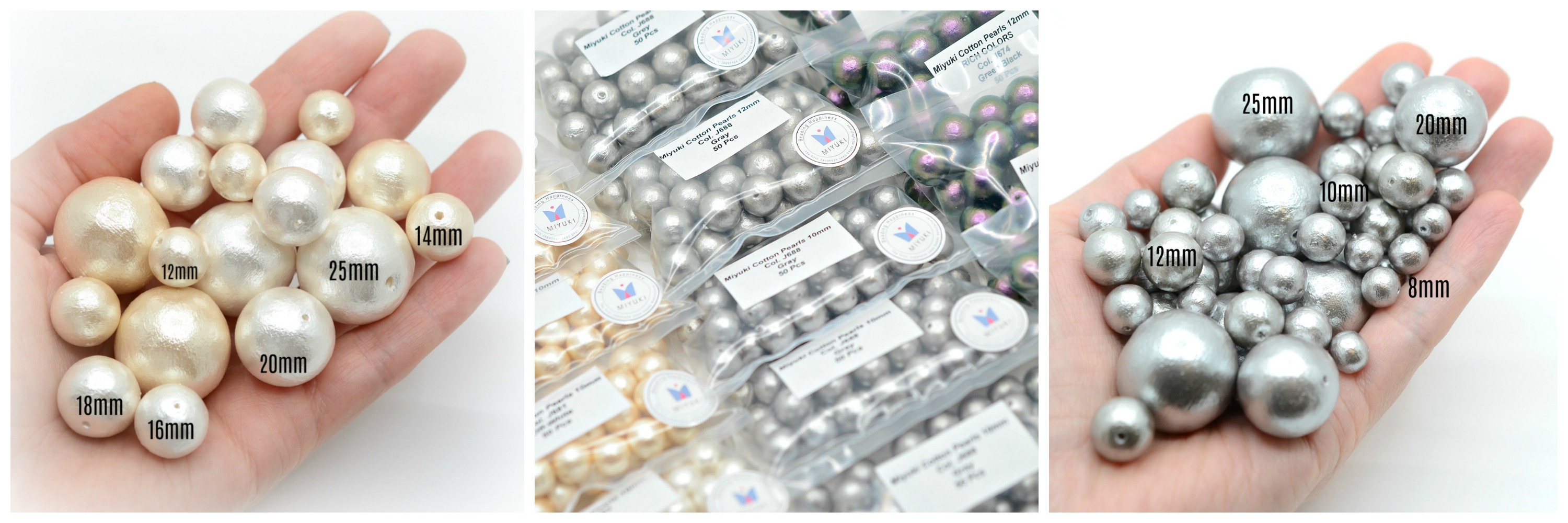
So, cotton pearls - as the name implies, this is a cotton mass, which is shaped under great pressure and coated with a coloring composition based on pearl essence.
- beads are extremely light, even in sizes 25, 30 and 35mm
- the texture of the beads is also unique - rough, which gives refinement and a vintage look to the products
- varied color palette
- since cotton can be shaped into any shape, the Japanese learned how to make beads of various types - round, drops, rice, pear-shaped
Here is such a stunning cotton pearl.
But with another species that fell into my comparison, things are more vague. But I will try to lift the veil of secrecy.
As soon as this pearl is not called. Both shell and organic ... However, the name "Majorca pearls" has firmly entrenched in the Russian-speaking space, although it has NOTHING to do with the pearls produced on this island.

The most correct name is Shell Pearl . Its essence is already hidden in the name itself. "Shell" in translation into Russian - "shell, shell". So the main component of these pearls are shells of mollusks.
The first mention of this type of pearl appeared in 1984. At one of the jewelry exhibitions, a fake of natural pearls was discovered. And so successful that only after studying in the laboratory, they revealed that it was a bead coated with mother-of-pearl essence. The sample was identical in weight and appearance to cultured pearls and only chem. analysis and X-ray examination revealed that the bead is a ball obtained from the shell of a mollusk.
For a long time, such imitation was produced by only a few companies and cost almost as much as cultured pearls. However, it was popular because it was possible to create perfectly even pearls for jewelry (in the case of natural pearls, it is still quite difficult to find the perfect pair for earrings).
And here our dear Chinese come into play, who pick up everything on the fly with extraordinary speed))) It was they who put the production of this type of pearl on stream, reducing its cost and, unfortunately, lowering the quality. Now such pearls are produced from 2 types of raw materials:
- beads from whole pieces of clam shells
- pressed beads from the remains of the same valves
Naturally, the price of beads depends on this.
Previously, such beads were covered only with a composition of natural mother-of-pearl and the color range was not so extensive. Only shades close to shades of natural pearls. Now on the market you can find a huge variety of color palettes (up to neon and opalescent shades). This is due to the fact that dyes are now added to the outer coating.
We have been collecting information about this pearl for several years, trying new suppliers, looking for a better product and always wondering who first came up with such an imitation, but even they know NOTHING about it.
Now there are several manufactories in China, Hong Kong and Taiwan that create these beautiful pearls. Thanks to them, we have a beautiful and inexpensive material for the realization of our fantasies.
And now let's move on to the most interesting - directly to the comparison. I compare cotton pearls and textured pearls Shell Pearl. Honestly, who will immediately determine from the photo where which pearls are?
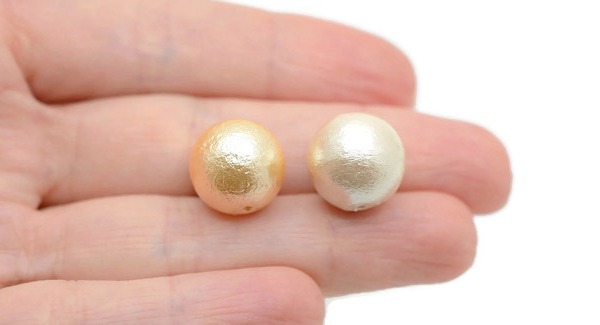
Very similar! Is it true? Experienced craftsmen who often work with cotton pearls will surely cope quickly and choose the right option. But novice craftsmen or those who have not worked with cotton pearls, I think they will be puzzled) Quickly, it is difficult to determine by appearance. We need other senses) And, in order to determine which pearls are, of course, you need to hold them in your hands. Indeed, in this case, the main criterion is WEIGHT ! A cotton pearl, even of a large diameter, weighs almost nothing. But the Shell Pearl will be noticeable by weight (especially if it is a large size). I have 14mm in the photo. And it is the weight that must be taken into account when creating jewelry. To better feel the difference, I made simple earrings from both types of pearls and compared them by entering the data in the table. Let's get a look....
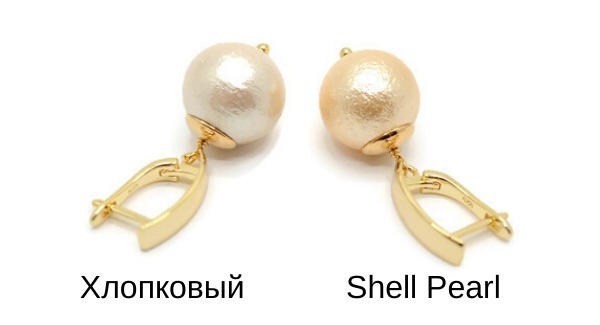
| Criteria |
Cotton pearl
|
Shell Pearl (textured) |
| Weight of one earring |
1.77g |
5.08g |
| Price |
0.85€ |
0.40€ |
| Size |
14mm |
| External qualities |
≈ identical |
| Resistance to external influences |
do not wet, squeeze, do not scratch |
preferably not to drop |
| Durability * |
no information |
durable |
*I have not found information on the Internet regarding durability and can be based on my own reasoning and experience. Since cotton pearls are organic in nature, they cannot be durable. However, its service life will be quite enough. After all, we do not create jewelry for many generations, but costume jewelry)))
As you can see, they are not interchangeable. One wins in weight and can be included in really large, massive jewelry. The other has a better price and does not require such careful treatment. Bracelets, earrings with it have a pleasant heaviness, which is sometimes a plus, not a minus.
Friends, I hope the information I have collected will help you decide which pearls to give your Love and which of them to use in a particular piece of jewelry.
And I leave you links where you can be inspired by looking at the jewelry of other masters made of cotton pearls and Shell Pearls .
Leave a comment below this article if you have any questions. Let's share useful information and get to the bottom of the truth together.
Anna and MAGNOLIA Bijou

